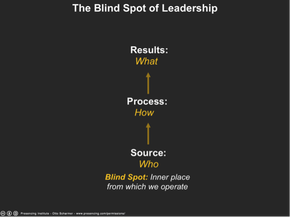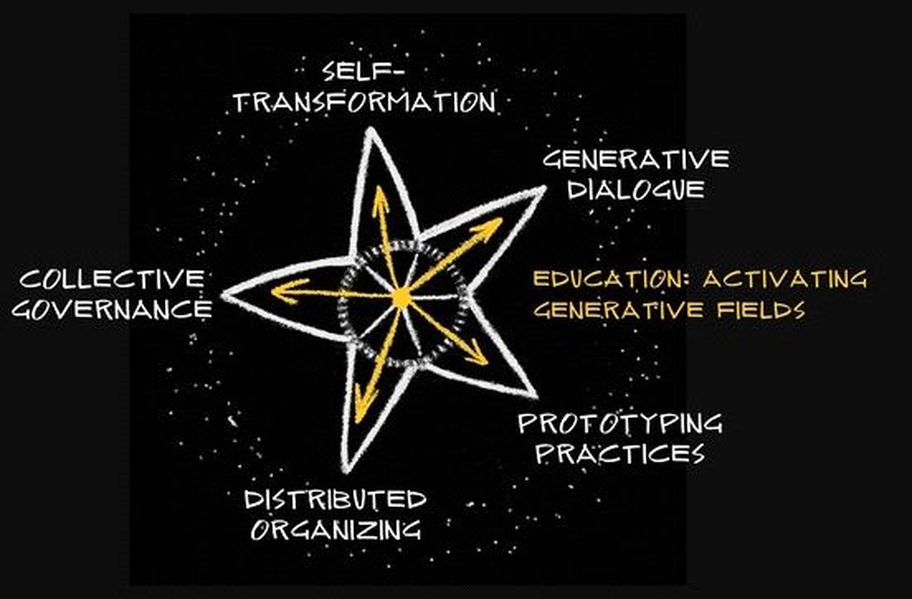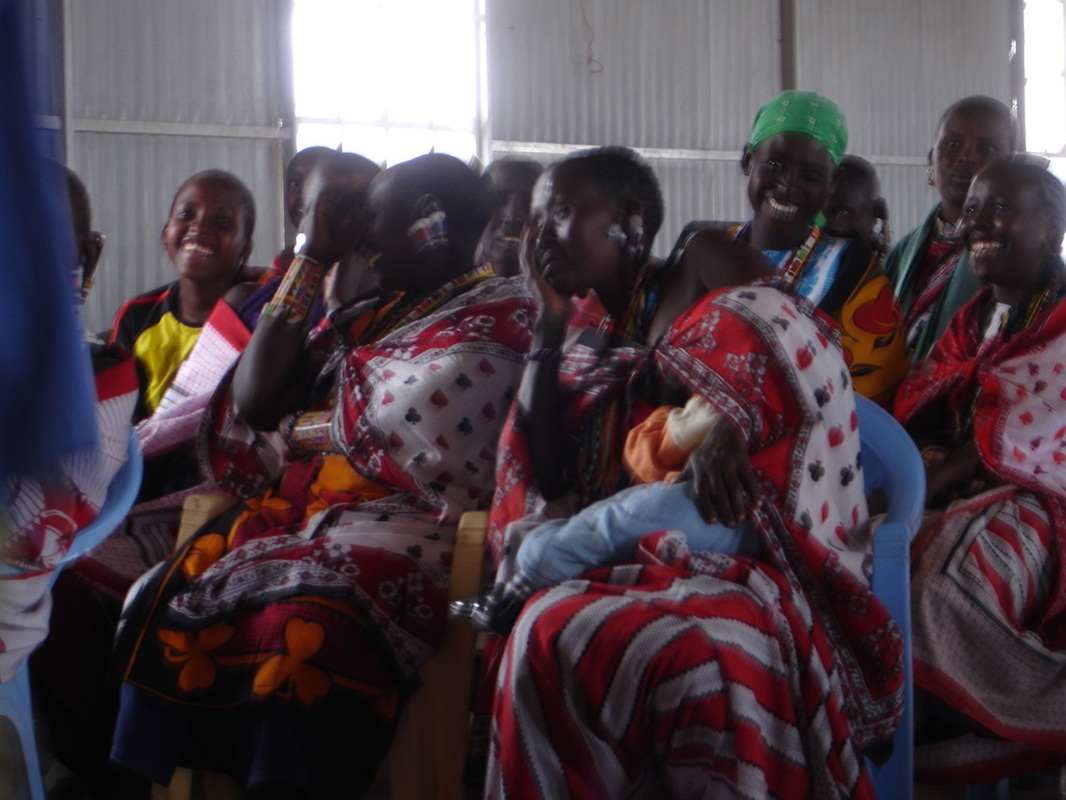We use the principles of Presencing to facilitate communities of diverse interests to shift from:
Ego-Centered Wranglings
to
Eco-Centered Lean Community
to
Eco-Centered Lean Community
☆ Generative Dialogue
Presencing / Theory U | MIT (Otto Scharmer)
Otto Scharmer's contribution facilitates a shift from Ego to Eco centric dialogue. Theory U integrates a comprehensive, collective process for co-generating breakthrough solutions to systemically-embedded problems.
Presencing / Theory U | MIT (Otto Scharmer)
Otto Scharmer's contribution facilitates a shift from Ego to Eco centric dialogue. Theory U integrates a comprehensive, collective process for co-generating breakthrough solutions to systemically-embedded problems.
 Figure 1
Figure 1
EXECUTIVE SUMMARY
PRESENCING/ THEORY U (PRESENCING) IS A COMPREHENSIVE FRAMEWORK FOR GENERATIVE DIALOGUE.
INTRODUCTION
Theory U proposes that the quality of the results that we create in any kind of social system is a function of the quality of awareness, attention, or consciousness that the participants in the system operate from.
Since it emerged around 2006, Theory U has come to be understood in three primary ways: first as a framework; second, as a method for leading profound change; and third, as a way of being - connecting to the more authentic, higher aspects of our self.
SHIFTING THE INNER PLACE FROM WHICH WE OPERATE
During an interview, Bill O’Brien, the late CEO of Hanover Insurance, summarized his most important insights from leading transformational change in his own company. O’Brien said: “The success of an intervention depends on the interior condition of the intervener.” We might say it this way: the success of our actions as change-makers does not depend on What we do or How we do it, but on the Inner Place from which we operate (see Figure 1).
When Otto first heard Bill O’Brien say that he thought, “What do I really know about this inner place? I know nothing! Do we have one or several or an infinite number of these places?” He did not know because that place is in the blind spot of our everyday experience. We can observe what we do and how we do it. But the quality of the source (or inner place) from which we operate in “the Now” tends to be outside the range of our normal observation, attention, and awareness.
That puzzling insight into the deeper source level of social reality creation set us on an intriguing path of inquiring and integrating recent findings in leadership, management, economics, neuroscience, contemplative practice and complexity research. The essence of that view is that we cannot transform the behavior of systems unless we transform the quality of awareness and attention that people apply to their actions within these systems, both individually and collectively.



